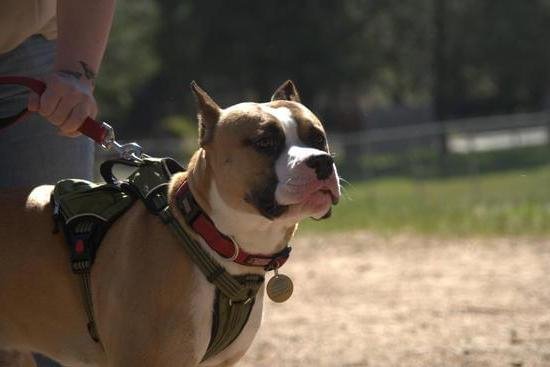Are you tired of your dog sleeping in a crate every night? Do you want to train your furry friend to sleep comfortably outside of the crate? In this article, we will discuss how to train your dog to sleep out of the crate and enjoy the freedom of sleeping elsewhere.
Training your dog to sleep out of the crate can bring numerous benefits, both for you and your pet. Not only does it provide more freedom and comfort for your dog, but it also allows for a stronger bond between you and your furry companion. Understanding your dog’s sleeping needs and behaviors is crucial in this process, as it sets the foundation for creating a comfortable sleeping area and establishing a regular bedtime routine.
Creating a comfortable sleeping area for your dog is essential in training them to sleep out of the crate. From choosing the right bedding to finding an ideal location for their bed, there are various factors to consider when creating a cozy space for your pet. Additionally, using positive reinforcement techniques can encourage your dog to embrace their new sleeping arrangement, while also addressing any potential challenges or setbacks that may arise along the way.
Understanding Your Dog’s Sleeping Needs and Behaviors
Importance of Understanding Your Dog’s Sleep Patterns
Just like humans, dogs have different sleep patterns and behaviors. Understanding your dog’s sleeping needs is crucial to successfully training them to sleep out of the crate. Dogs generally need about 12-14 hours of sleep a day, depending on their age, breed, and activity level. It’s important to observe your dog’s natural sleeping habits to tailor their sleep training accordingly.
Signs of Discomfort or Anxiety
It’s essential to recognize signs of discomfort or anxiety in your dog when it comes to sleeping outside of their crate. Some dogs may feel insecure or stressed when removed from their familiar sleeping space, while others may struggle with separation anxiety. Common signs of discomfort include restlessness, pacing, excessive whining, or even destructive behavior. Paying attention to these signs will help you address any issues that may arise during the training process.
Creating a Safe and Comfortable Sleeping Environment
Before transitioning your dog out of the crate at bedtime, it’s important to create a safe and comfortable sleeping environment for them. Choose an area that is quiet, dark, and free from distractions. Provide a comfortable bed or mat for your dog to sleep on, making sure it is suitable for their size and breed. Additionally, consider using a white noise machine to drown out any external noises that may disrupt your dog’s sleep.
Understanding your dog’s individual needs and behaviors will play a significant role in successfully training them to sleep outside of their crate. By paying attention to their natural sleep patterns and addressing any anxieties or discomfort they may have, you can create a conducive environment for successful training.
Creating a Comfortable Sleeping Area for Your Dog
Choose the Right Bed
When it comes to selecting a bed for your dog, consider their size, sleeping habits, and any special needs they may have. Some dogs prefer a soft and plush bed, while others may feel more secure in a firm and supportive bed. Take into account your dog’s age, breed, and any existing health conditions that may require a specific type of bed.
Location, Location, Location
Where you place your dog’s bed can make a big difference in their comfort level. Choose a quiet, low-traffic area of your home where they can take uninterrupted naps or get a good night’s sleep. Consider placing the bed in a spot where your dog can still feel connected to the family, such as the corner of the living room or in your bedroom.
Add Comforting Elements
Enhance your dog’s sleeping area with comforting elements that promote relaxation. Adding blankets or plush toys can provide warmth and security for your dog. Some dogs also enjoy having a piece of clothing with their owner’s scent on it in their bed. This can help ease separation anxiety and make them feel more at ease when sleeping outside of the crate.
By creating a comfortable and inviting sleeping space for your dog, you are setting them up for success when transitioning them to sleep out of the crate. Pay attention to your dog’s preferences and behavior to ensure that their sleeping area meets their needs and helps them feel safe and secure.
Establishing a Regular Bedtime Routine
A consistent bedtime routine is essential when training your dog to sleep out of the crate. Dogs, like humans, thrive on routine and predictability. By establishing a regular schedule for bedtime, you can help your dog understand when it’s time to wind down and prepare for sleep. This routine can include activities such as a leisurely walk, brushing their coat, and providing a comfortable sleeping area.
Additionally, it’s important to create a calming environment during the bedtime routine. This means dimming the lights, minimizing household noise, and avoiding stimulating activities such as rough play or intense training sessions right before bed.
Finally, be sure to set a specific time for your dog’s bedtime and stick to it as closely as possible each night. Consistency will help your dog develop an internal clock and understand when it’s time to settle in for the night.
| Activity | Description |
|---|---|
| Leisurely Walk | A short walk around the neighborhood before bedtime. |
| Brushing Their Coat | Gentle brushing or grooming session to help them relax. |
| Soothing Environment | Create a calming atmosphere with minimal noise and dimmed lighting. |
| Bedtime Schedule |
Using Positive Reinforcement to Encourage Sleeping Out of the Crate
When it comes to training your dog to sleep out of the crate, positive reinforcement is a powerful and effective tool. Positive reinforcement involves rewarding your dog for good behavior, which encourages them to repeat that behavior in the future. In this case, you want to use positive reinforcement to encourage your dog to choose their designated sleeping area over the crate.
One of the most common methods of positive reinforcement is using treats. You can give your dog a small, tasty treat when they willingly go to their bed or designated sleeping area instead of the crate at bedtime. Over time, they will start associating their new sleeping spot with something positive and rewarding. It’s important to only use high-quality treats and limit the amount given to avoid overfeeding.
In addition to treats, verbal praise and affection are also powerful forms of positive reinforcement. When your dog chooses their designated sleeping area on their own, be sure to shower them with praise and pets. Use an upbeat tone of voice and show them how happy you are with their choice. Dogs thrive on attention from their owners, so this form of positive reinforcement can be particularly effective in encouraging them to sleep out of the crate.
| Positive Reinforcement Method | Effectiveness |
|---|---|
| Treats | Highly Effective |
| Verbal Praise and Affection | Effective for some dogs |
Addressing Potential Challenges and Setbacks
Training your dog to sleep out of the crate can be a rewarding experience, but it’s not without its challenges. Here are some common issues that dog owners may encounter, along with strategies for addressing them:
1. Separation Anxiety: Some dogs may experience anxiety when separated from their crates, especially if they have been accustomed to sleeping in them for a long time. To address this issue, gradually extend the amount of time your dog spends outside of the crate during the day, and provide plenty of mental and physical stimulation to keep them occupied.
2. Accidents and Destructive Behavior: As your dog adjusts to sleeping out of the crate, there may be accidents or instances of destructive behavior. It’s important to remain patient and consistent with your training, and to reinforce good behavior with positive reinforcement techniques such as treats and praise.
3. Resistance to Change: Some dogs may simply resist the idea of sleeping outside of their crate. In these cases, it’s important to approach the training process with patience and understanding. Be sure to create a comfortable sleeping area for your dog, establish a consistent bedtime routine, and use positive reinforcement to encourage them to sleep outside of the crate.
By anticipating potential challenges and setbacks, you can take proactive steps to address them and help your dog make a smooth transition to sleeping out of the crate. With patience, consistency, and positive reinforcement, you can overcome these obstacles and enjoy the rewards of having a well-trained, crate-free sleeping dog.
Monitoring Your Dog’s Progress and Making Adjustments
As you begin the process of training your dog to sleep out of the crate, it’s important to closely monitor their progress and make any necessary adjustments along the way. Keep a close eye on your dog’s behavior, especially during the initial stages of transitioning from crate to a designated sleeping area. Pay attention to signs of restlessness, anxiety, or resistance to the new sleeping arrangement.
During this monitoring phase, take note of any specific factors that may be impacting your dog’s ability to sleep comfortably outside of the crate. This could include noise levels in the household, temperature changes, or even changes in routine that may be causing stress for your dog. By being proactive and observant, you can identify areas for improvement and make the necessary adjustments to ensure a smooth transition.
In addition to observing your dog’s behavior, it’s also important to keep track of any changes in their sleeping patterns or overall well-being. If you notice any significant disruptions in their sleep quality or duration, it may indicate that further adjustments are needed in their sleeping environment or bedtime routine.
Remember that every dog is unique, so it may take some trial and error before finding the perfect setup for your furry friend. Stay patient and attentive as you continue to monitor their progress and make necessary adjustments for a successful transition to crate-free sleeping.
Troubleshooting Common Issues and Concerns
When training your dog to sleep out of the crate, it’s important to be prepared for some common issues and concerns that may arise. Here are some tips for troubleshooting these challenges:
1. Restlessness at bedtime: If your dog seems restless or has trouble settling down at bedtime, consider increasing their daily exercise. A tired dog is more likely to sleep peacefully through the night.
2. Accidents in the house: Some dogs may have accidents when transitioning from sleeping in a crate to sleeping outside of it. To address this, take your dog outside for a bathroom break right before bedtime and limit their water intake in the evening.
3. Separation anxiety: If your dog experiences separation anxiety when not sleeping in the crate, try leaving an item with your scent on it, such as a worn t-shirt, near their sleeping area. You can also gradually extend the time you spend away from them while they are sleeping outside of the crate to help them adjust.
By proactively addressing these common issues and concerns, you can make the transition to crate-free sleeping a smooth and positive experience for both you and your beloved pet. Remember to be patient and consistent with your training efforts, as it may take time for your dog to fully adjust to their new sleeping arrangement.
Conclusion
In conclusion, training your dog to sleep out of the crate can be a rewarding and fulfilling experience for both you and your furry companion. By understanding your dog’s sleeping needs and behaviors, creating a comfortable sleeping area, establishing a regular bedtime routine, and using positive reinforcement, you can successfully transition your dog to sleeping outside of the crate.
While there may be challenges and setbacks along the way, monitoring your dog’s progress and making adjustments when necessary will help ensure a smooth transition.
Once your dog is comfortably sleeping outside of the crate, you will be able to enjoy the benefits of having a well-trained, crate-free sleeping dog. Not only will this give your dog more freedom and independence, but it will also strengthen the bond between you and your pet. Your dog will feel more secure in their designated sleeping area, leading to better overall behavior and improved quality of life.
Overall, with patience, consistency, and love, you can achieve success in training your dog to sleep out of the crate. The rewards of having a well-trained, crate-free sleeping dog are well worth the effort put into the training process. Enjoying peaceful nights with your contented canine companion is just one of the many rewards that come from successfully transitioning them out of the crate.
Frequently Asked Questions
How Do I Transition My Dog to Sleep Outside the Crate?
Transitioning your dog to sleep outside the crate involves gradually increasing their comfort level with being outside the crate at night. Start by placing their bed or a comfortable blanket near the crate, then move it further away over time.
Make sure they have access to water and a potty break before bedtime. Consistency and positive reinforcement are key to helping your dog feel safe and secure sleeping outside the crate.
How Do I Get My Dog to Stop Crating at Night?
To get your dog to stop crating at night, you’ll need to address any underlying reasons for their discomfort with being outside the crate. Ensure that they have had enough exercise and mental stimulation during the day, as this can help them feel more relaxed at night.
Additionally, provide a comfortable bed or blanket in a designated sleeping area, and consider using calming scents or white noise machines to create a soothing environment for your dog.
At What Age Should a Dog Stop Sleeping in a Crate?
The age at which a dog should stop sleeping in a crate can vary depending on the individual dog’s behavior and needs. Some dogs may naturally outgrow the need for a crate earlier than others, while some may benefit from continuing to use a crate for longer periods of time.
It’s important to observe your dog’s behavior and consult with a veterinarian or professional trainer to determine when it might be appropriate to transition them out of using a crate for sleeping.

Welcome to the blog! I am a professional dog trainer and have been working with dogs for many years. In this blog, I will be discussing various topics related to dog training, including tips, tricks, and advice. I hope you find this information helpful and informative. Thanks for reading!





